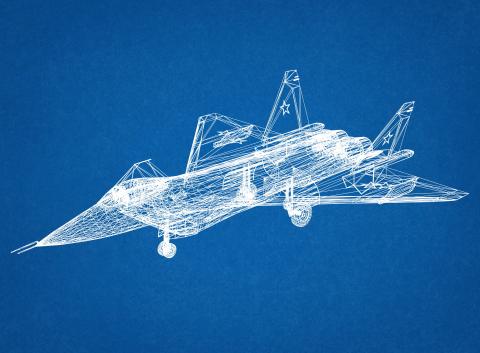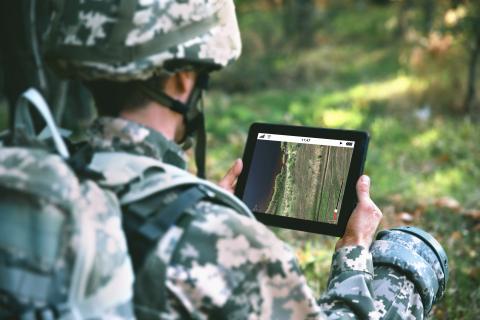From Battlefield to Base: 3D Printing Revolutionizes the U.S. Military
December 21, 20233D printing is a transformational technology that offers incredible levels of customization and detail for a variety of applications. From art to education, engineering to entertainment, 3D printing is revolutionizing how materials are created and the speed at which it can be done.
Some of the most exciting uses for 3D printing are combing from the defense industry, where practical and innovative uses are helping to transform how the U.S. Military operates in both combat and non-combat settings. These new developments are creating safer front lines, providing better medical care, and reducing time and costs across nearly all operations.
Here’s a look at some of the most unique and impactful applications for 3D printing currently deployed by the U.S. Military.
Combat Applications:
On-Demand Parts Manufacturing
If a piece of equipment breaks, soldiers can scan the broken part, download a digital file, and 3D print a new one in a matter of hours, even in harsh environments. Waiting for replacement parts from distant supply lines could take months, but 3D printing can keep soldiers and equipment operational, minimize logistical headaches and mission delays, and serve as a significant lifeline for soldiers in remote locations.
Customized Equipment
3D printing empowers soldiers to personalize their gear for optimal comfort and performance. This could include ergonomic weapon grips that can improve accuracy, reduce fatigue, and prevent injuries; drone landing pads that can ensure safe and stable landings on uneven terrain; and custom ear molds that can reduce the risk of hearing damage from combat situations.
Rapid Prototyping and Testing
3D printing can significantly accelerate the development of new equipment and tactics by enabling quick and iterative prototyping. Soldiers can design and print multiple versions of their ideas in a matter of days, test them in simulated or real-world scenarios, and refine their designs based on the results. This significantly reduces development time and cost, leading to faster innovation and deployment of effective new technologies.
Construction and Fortification
Soldiers can 3D print pre-designed modules for bunkers or observation posts, significantly reducing construction time and manpower requirements. And because these materials can be lightweight and durable, they are ideal for transporting and deploying in remote locations.
Medical Applications
A soldier injured in combat could require a custom prosthetic or specialized surgical tools. With 3D printing technology, medics can scan the injury, design a customized prosthetic or tool on-site, and print it within hours. This significantly improves the speed and quality of care, potentially saving lives and reducing long-term disabilities.
Non-Combat Applications of 3D Printing in the U.S. Military:
Logistics and Supply Chain Optimization
Military bases often rely on complex supply chains for essential items, which can be disrupted by delays and sabotage. 3D printing offers a solution by enabling on-demand manufacturing. Bases can print commonly used items like tools, replacement parts, or even mess hall utensils, reducing reliance on external suppliers and saving time and money. Engineers or mechanics can design and print specialized tools needed for specific tasks, reducing the need for extensive inventories and streamlining maintenance processes.
Training and Simulation
3D printing can enhance soldiers’ training by creating replicas of equipment, weapons, and terrains. Complex scenarios can be simulated using 3D-printed models and interactive elements, allowing soldiers to practice critical decision-making and tactical skills without the risks of live-fire exercises.
Humanitarian Aid and Disaster Relief
3D-printed shelters can be created on-site, providing immediate refuge for displaced communities. 3D-printed prosthetics and orthotics can be customized for individuals injured in disasters, while medical models and tools can support medical teams in the field. And 3D-printed bridges or water purification systems can be deployed quickly, restoring critical infrastructure in disaster-stricken areas.
Base Development and Maintenance
Within military bases, 3D-printed furniture can be designed for specific needs and spaces, improving morale and comfort for personnel. Replacement parts can be printed for buildings, vehicles, or other base equipment, reducing reliance on external contractors and streamlining maintenance. And personalized signage or decorative elements can be printed to enhance the overall look and feel of the base, fostering a sense of community and belonging.
Building Your Career at Capitol Tech
Capitol Tech’s degree programs in Engineering Technologies can prepare you to create innovative technological solutions that address challenges across a variety of industries. For more information, contact our Admissions team at admissions@captechu.edu.




